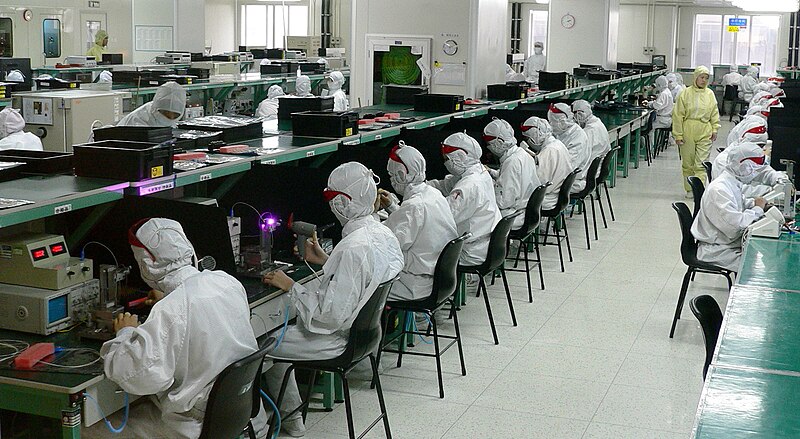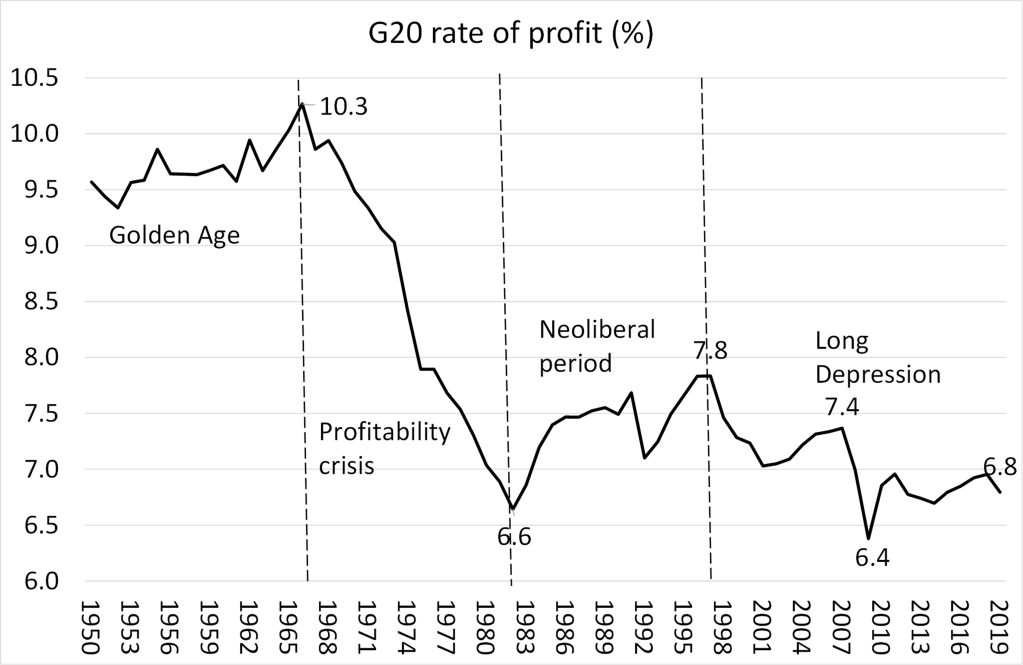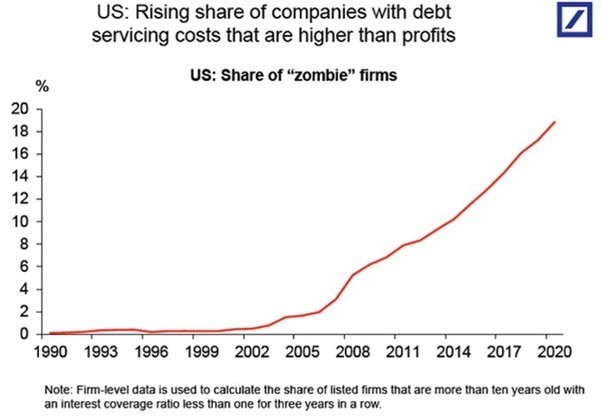The Long Depression of the 21st century may have begun in 2009, but the economic forces that caused it were underway as early as 1997 onwards.
Michael Roberts is an Economist in the City of London and a prolific blogger
Cross-posted from Michael’s Blog

Photo: Steve Jurvetson licensed under the Creative Commons Attribution 2.0 Generic
One of my basic theses about modern capitalism is that since 2008, the major capitalist economies have been in what I call a Long Depression. In my book of 2016 of the same name, I distinguish between what economists call recessions or slumps in production, investment and employment; and depressions. Under the capitalist mode of production (ie production for profit appropriated from human labour (power) by a small group of owners of the means of production), there have been regular and recurring slumps every 8-10 years since the early 19th century. After each slump, capitalist production revives and expands for several years, before slipping back into a new slump.
However, depressions are different. Instead of coming out of a slump, capitalist economies stay depressed with lower output, investment and employment growth than before for a longish period.

There have been three such depressions in capitalism: the first was in the late 19th century in the US and Europe, lasting more or less from about 1873 to 1897, depending on the country. During that long depression, there were short periods of upswing but also a succession of slumps. Overall, output and investment growth remained much weaker than in the previous expansion period of 1850-73.
The second depression was the so-called Great Depression lasting from 1929-1941 up to WW2, mainly in the US and Europe, but also in Asia and South America.
The third depression began after the Global Financial Crash of 2007-8 and the ensuing Great Recession of 2008-9. This depression (as defined) lasted for a decade up to 2019 until it seemed that the major economies were not only growing much more slowly than before 2007, but were heading into an outright slump.

Then the COVID pandemic slump happened and the world economy suffered a severe contraction.

Now, just as the major economies were staggering out of the pandemic, the world has been hit again by the Russia-Ukraine conflict and its ramifications for economic growth, trade, inflation and the environment.
The contradictions in the capitalist mode of production have intensified in the 21st century. Now there are three components. There is the economic: with the Global Financial Crash of unprecedented proportions occurring in 2007-8, followed by the Great Recession of the 2008-9 (the biggest economic slump since the 1930s).
Then there is the environmental, with the COVID pandemic as capitalism’s rapacious drive for profit led to uncontrolled urbanisation, energy and minerals exploitation, along with industrial farming. This eventually led to the release of dangerous pathogens previously locked into animals in remote regions for thousands of years. These pathogens have now escaped across farm animals and from (possibly) laboratories into humans with devastating results.

And don’t forget the impending global warming nightmare descending on the poor and vulnerable globally.

Third, there is the geopolitical contradiction amid the struggle for profit among capitalists in this depressed economic period. Competition has intensified between the imperialist powers (G7-plus) and some economies which have resisted the bidding of the imperialist bloc, like Russia and China. So, in the 21st century; from Iraq to Afghanistan and onto Yemen and Ukraine, geopolitical conflicts are increasingly being conducted through war. And the big battle between the US and China/Taiwan is coming closer.
The Long Depression of the 21st century may have begun in 2009, but the economic forces that caused it were underway as early as 1997 onwards. It was then that the average rate of profit on capital in the major capitalist economies began to fall and, despite some small bursts of recovery (mainly driven by economic slumps and huge credit injections), the profitability of capital remains near all-time lows.

Profit drives investment in capitalism; and so falling and low profitability has led to slow growth in productive investment. Instead, capitalist institutions have increasingly speculated in financial assets in the fantasy world of stock and bond markets and cryptocurrencies. And the imperialist bloc increasingly looks to compensate for weakness in the ‘global north’ by exploiting further the ‘global south’.

So far, there is little sign that capitalism can get out of this Long Depression, even if the current Ukraine disaster is resolved. To end the depression would require a cleansing of the economic system through a slump that liquidates the zombie companies that reduce profitability and productivity growth and increase debt burdens.

Also, it seems that recalcitrant economic powers like Russia and China must be tamed or crushed if the major capitalist economies can have a new lease of life. That’s a frightening prospect. The only hope of escape from the impact of the Long Depression and more wars is for the coming to power of democratic socialist governments based on working people, which can sponsor a real united nations to end economic crises; reverse environmental disasters for the planet; and achieve a peaceful development of human society.
Support us and become part of a medium that takes responsibility for society
BRAVE NEW EUROPE is a not-for-profit educational platform for economics, politics, and climate change that brings authors at the cutting edge of progressive thought together with activists and others with articles like this. If you would like to support our work and want to see more writing free of state or corporate media bias and free of charge. To maintain the impetus and impartiality we need fresh funds every month. Three hundred donors, giving £5 or 5 euros a month would bring us close to £1,500 monthly, which is enough to keep us ticking over.


Be the first to comment